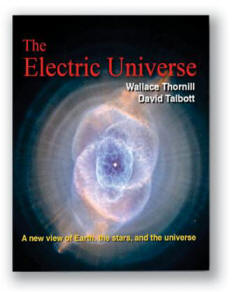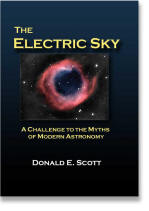
home •
about •
essential guide •
picture of the day •
thunderblogs •
news •
multimedia •
predictions •
products •
get involved •
contact
picture of the day archive subject index
Image Credit: Peter Potterfield, MountainZone.com
Jun 27, 2007
The Mountains of PatagoniaLong-standing theories of mountain uplift have never adequately explained the towering vertical features we often observe. But the picture changes when researchers consider the possible role of the electric force.
Southern Argentina is spectacular. In fact, the entire South American continent is dominated by extreme topography; lava fields, deserts, needle-sharp mountain peaks and craters. There are many theories about how the region developed such unusual terrain, most based on long-term volcanism and glacier scouring. However, several examples of such topography have been imaged on Mars and other planetary bodies. Could that suggest a similar process of formation regardless of where they're found?
In conventional geological terms, Patagonia exhibits landscapes that are millions, if not hundreds of millions of years old. The Fitz Roy and Cerro Torre mountain peaks, shown above, are part of an extensive uplift formation caused by the continuous folding and compression of the continent. As authors Mariolina and Giorgio Ardrizzi write:
Scholars believe that the origin of such a fragmented geography like that which can be seen at present along the Patagonian fjords and those of the Tierra del Fuego, can be put down to four main factors:
1. the meeting of the oceanic plate with the continental shelf;
2. complex exogenous phenomena, especially of erosion by water that took place during the pre-Tertiary periods;
3. a period of intense glaciation, that started in the last 2 million years and ended 14,000 years ago with the last glaciation;
4. complex geological phenomena, especially bradyseisms and earthquakes, which made the ground sink opening a breach to the waters of the ocean that went kilometres up the ancient valleys.There are some characteristics that bring into question the age of the features, however. Many of the landforms include rivers that empty into lakes with no outlets. If the lakes are part of such ancient geography, why have they not been filled-in with debris from the eroding mountain ranges that surround them?
The mountain ranges, such as Cerro Torre are composed of basalt. They formed when lava flows engulfed thousands of square kilometers, some reaching over nine thousand meters thick. Standard theories of formation fail to explain the terraced flanks of the valleys carved into the mountains. Some of them are blind canyons with hemispherical shapes that contain sharply pointed central peaks. The peaks are carved in terraces just like the canyon walls, another attribute that is very difficult to explain. How can a sharp "volcanic" peak demonstrate the same kind of terracing as the canyon wall?
Once again, there appears to be no debris remaining from the eroded lava. The valleys and canyons are thousands of meters deep, but the talus slopes are very small, there are no boulders on the valley floor, and no huge heaps of gravel or glacial moraines are apparent. Where has all the eroded material gone?
Another unusual feature of the basalt cliffs is the pothole shaped depressions incised into the top of the ridges. The holes contain water, but they have no rivers feeding them and they have no outlets. Although they are most likely filled in spring by snowmelt, their rims are sharply defined and do not appear to be eroded by wind or water. Another unusual aspect to their structure is the scour marks that cross over them.
Electric discharge machining could provide an explanation. In the historic phase of planetary instability envisioned by electrical theorists, planets were engulfed by electric discharge. In periods of intense arcing a trillion kilowatt bolt of lightning could have shattered and vaporized the rock, lofting it toward space, leaving the terraced cliffs and deep holes bored into the ridges. A hallmark of such activity would be the lack of debris and the smooth valley floors. The excised material would have been removed in a process akin to industrial plasma surface cleaning.
Previous Thunderbolt Pictures of the Day have described theories of such events on Mars that carved out Arabia Terra, Valles Marineris and other structures. Now we must ask whether major features on Earth, including the sharply sculpted mountains of Patagonia, are remnants left by cosmic thunderbolts.
By Stephen Smith
___________________________________________________________________________Please visit our Forum
The Electric Sky and The Electric Universe available now!

|
|

|
EXECUTIVE EDITORS:
David Talbott, Wallace Thornhill
MANAGING EDITORS:
Steve Smith, Mel Acheson
CONTRIBUTING EDITORS: Michael Armstrong, Dwardu Cardona,
Ev Cochrane,
C.J. Ransom, Don Scott, Rens van der Sluijs, Ian Tresman
WEBMASTER: Brian Talbott
Copyright 2007: thunderbolts.info
![]()
home
thunderblogs
forum
picture of the day
resources
team
updates
contact us

